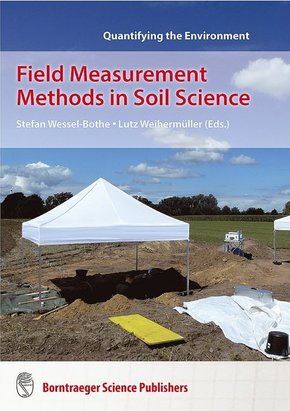Field Measurement Methods in Soil Science
| Verlag | Borntraeger |
| Auflage | 2020 |
| Seiten | 210 |
| Format | 17,0 x 24,0 x 1,4 cm |
| Gewicht | 570 g |
| Artikeltyp | Englisches Buch |
| Reihe | Quantifying the Environment |
| ISBN-10 | 3443011098 |
| EAN | 9783443011093 |
| Bestell-Nr | 44301109A |
Soils are progressively recognized as the critical environmental compartment they are. More and more practitioners and scientists address soil issues and work with soils in the context of their specific field of interest and profession. The rising interest in soils drives a mounting demand for soil information. This information must frequently be generated by field measurements (e.g. of soil water content, solute concentration in soil water, redox potential, pH ...) in order to describe e.g. water and solute transport processes, detect soil degeneration or optimize crop production. Users of soil measurement techniques need guidelines on how to decide which sensor/technique is most appropriate for their soil measurement needs. The authors of this book are renowned specialists in their fields of research and present answers to questions such as: _ Which parameters need to be measured? _ What techniques do exist and how do they differ? _ Which precision is required and achievable at what price? _ Which is the best technical equipment for the study? _ Which preconditions must be met to get meaningful results? _ How many replicates are required? _ How is the equipment installed and used optimally? _ Which pitfalls lurk when using a certain method? _ How to check data quality and how to interpret the data? The book is not only useful for soil-science "beginners" looking for an introductory review of available techniques, but also for more experienced colleagues by providing "best practice" guidelines for consistent, reproducible installation and operation of field instruments to collect reliable and meaningful data which can be gainfully interpreted.

